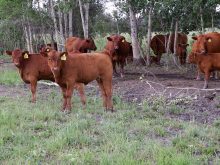Canada has become the first country affected by the H1N1 virus to convince China to end restrictions on pork imports, although it will involve more paperwork for producers.
Last week after meetings of agriculture ministers in Paris, Canadian minister Gerry Ritz announced that the Chinese had agreed to “supplementary certification requirements” that will allow increased amounts of Canadian pork products into the country that has traditionally purchased close to $45 million annually.
And since no other pork exporter has yet negotiated full access to the Chinese market, Ritz and Canadian pork industry leaders say this could allow Canada to expand its market share.
Read Also

Trade war may create Canadian economic opportunities
Canada’s current tariff woes could open chances for long-term economic growth and a stronger Canadian economy, consultant says — It’s happened before.
While the minister would not get into the “nuts and bolts” of the agreement, Canadian Pork Council communications manager Gary Stordy said March 1 it will require producers selling to a packing plant that ships to China to sign a certificate asserting the animal is healthy and was raised to the standards of the Canadian Quality Assurance program.
The CQA is an on-farm food safety program operated by the CPC since 1998 and based on the Hazard Analysis Critical Control Point (HACCP) system. The Chinese accepted the World Organization for Animal Health judgment that Canadian pork is scientifically safe and Stordy said the CQA program is the way producers can prove it.
“This absolutely was the ticket for us to get back into that market,” he said.
Added Ritz: “We were stopped cold turkey last spring with the outbreak of H1N1. China dropped the hammer, didn’t allow any pork in. We are the first country to be able to negotiate a re-entry into the market with a certificate. That goes a long way to validating our processes here in Canada.”
Statistics Canada figures tell a different story about Canada-China pork trade last year. While it declined almost 18 percent, the federal statistical agency reports that the value of exports to China still stood at $38.2 million in 2009.
In May and June after H1N1 was detected in Canada, the border closed, then opened for some imports in July, became virtually closed in August and September and then recorded some movement during the last three months of the year.
Stordy said the industry has high hopes that continued restricted access from other major pork exporters, including the United States, could give Canada a chance to capture new consumers.
“We see this as an important opportunity,” he said.
Ritz expressed the same optimism.
“I do know that once the Chinese get a taste for that top quality pork product that we have here in Canada, that it’s going to be really tough for someone else to bump us out of that marketplace,” he said.
The minister credited the work of the trade secretariat in Agriculture Canada and high-level intervention by prime minister Stephen Harper during a visit to China last year.
Stordy added that the hog industry’s national on-farm food safety system gives the Chinese confidence in Canadian products.














